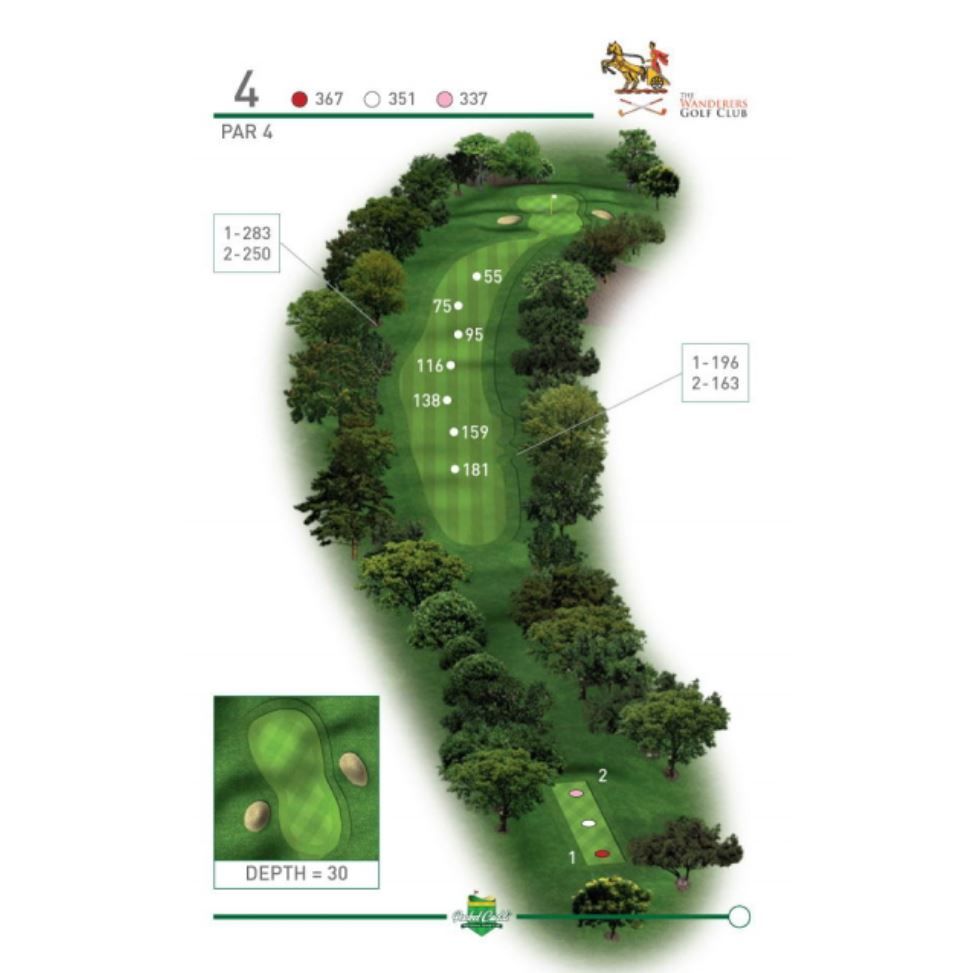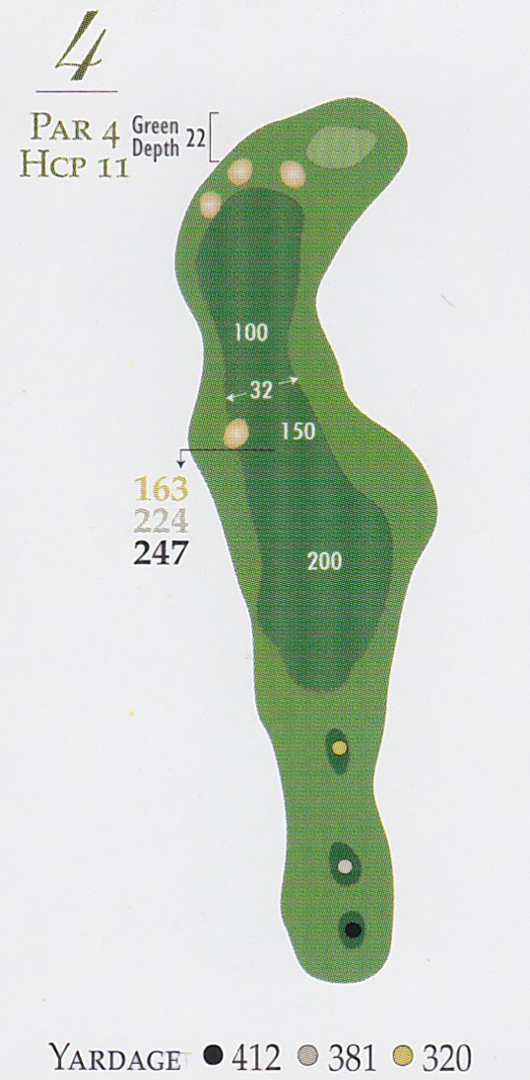What Is Considered The 4th Hole

Imagine a hush falling over a sun-drenched green, the rhythmic thwack of a club connecting with a ball, and the collective breath held as it soars through the air. The distant cheer erupts as it lands, perhaps a bit too close to the pin, a player muttering to themselves with a mix of frustration and determination. This, my friends, is the spirit of the game we all love, and often, the fourth hole is where the true character of a round begins to reveal itself.
But what exactly do we mean when we talk about "the fourth hole"? It's more than just a sequential marker on a golf course. It represents a crucial juncture in a golfer's journey, a place where initial jitters dissipate, strategies solidify, and the course starts to truly test both skill and mental fortitude.
The Anatomy of the Fourth
The fourth hole rarely exists in isolation. Its significance is deeply intertwined with the design, flow, and cumulative effect of the preceding holes.
Often, the first three holes serve as a warm-up, easing players into the rhythm of the course. These early holes might be relatively forgiving, allowing golfers to find their swing and establish a comfortable pace. Think of them as the opening act, preparing the stage for the drama to come.
By the time players reach the fourth, however, the honeymoon is generally over. The course designer often strategically places challenges – a strategically positioned bunker, a deceptive slope, or a water hazard lurking just out of sight.
A Test of Adaptation
One of the defining characteristics of the fourth hole is its variability. There's no standard length, par, or difficulty level.
It could be a relatively short par-4 requiring precision off the tee, or a daunting par-3 demanding a long iron shot over a chasm. Or, it may even be a reachable par-5 which invites aggressive play.
According to the United States Golf Association (USGA), course designers aim to create variety and challenge throughout the 18 holes, and the fourth hole is often a prime example of this principle. This variety means golfers must adapt their strategy and club selection based on the specific layout and conditions.
Beyond the Physical: The Mental Game
The fourth hole's impact extends far beyond the purely physical aspects of the game. It's a critical juncture for the mental aspect as well.
By this point, players have had a few opportunities to assess their performance and the overall state of their game. Good or bad, the initial scores begin to set the tone for the rest of the round.
If a golfer has started poorly, the fourth hole presents a chance to right the ship, to regain confidence and reset their focus. Conversely, a strong start can be quickly undone by a poor showing on the fourth, underscoring the importance of maintaining composure and consistency.
Golf psychologist Dr. Bob Rotella often emphasizes the importance of staying present and focusing on each shot, rather than dwelling on past mistakes or future expectations. The fourth hole, with its unique challenges, serves as a potent reminder of this principle.
A Statistical Look
While there isn't specific data tracked on the "average difficulty" of the fourth hole across all golf courses, data from amateur and professional tournaments offers some insight.
Reviewing scorecards from various tournaments reveals that the fourth hole frequently ranks among the more challenging holes on the front nine, especially when course designers have strategically placed it to capitalize on prevailing winds or other environmental factors.
Furthermore, the fourth hole can serve as a litmus test for a golfer's overall scoring potential. A bogey or worse on the fourth is often indicative of a round that may struggle to reach its full potential.
Historical Significance and Anecdotes
The significance of the fourth hole extends beyond mere statistics and strategy. It's a common setting for memorable moments and significant turning points in golfing lore.
Countless anecdotes exist of golfers making dramatic shots or suffering heartbreaking collapses on the fourth hole, forever etching it into their personal golfing history. While these stories often remain within individual golfing circles, they highlight the emotional weight and potential for both triumph and disaster that the fourth hole represents.
Even in major championships, the fourth hole can play a pivotal role. While overshadowed by the drama of the final few holes, a critical birdie or a costly double bogey on the fourth can significantly alter the leaderboard dynamics, influencing the outcome of the tournament.
Local Course Legends
Each local golf course likely has its own folklore surrounding the fourth hole. It might be known for a particularly tricky pin placement, a blind tee shot, or a notorious patch of rough.
These local legends contribute to the character of the course and the shared experiences of its players. The fourth hole, in these cases, becomes more than just a hole; it becomes a part of the course's identity and the collective memory of its golfing community.
Concluding Thoughts
So, the next time you step onto the fourth tee, take a moment to appreciate its unique significance. More than just a number, it's a gateway to deeper challenges, a testing ground for both skill and mental fortitude, and a potential stage for memorable moments.
Embrace the challenge, adapt your strategy, and stay present in the moment. The fourth hole, after all, is where the real game begins.
And who knows? Perhaps your next round will produce a story of triumph or resilience on that very hole, adding another chapter to its rich and ever-evolving legacy.


















